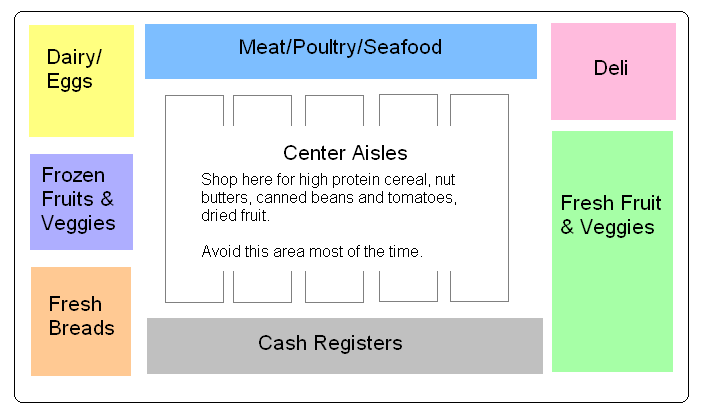Are you trying to eat healthy but don’t know where to begin? It starts at the grocery store! Learning how to shop smart when buying groceries will help you be more successful at maintaining your diet and improving your health. Once you learn some of these simple rules, shopping will be easy. Your home will be filled with foods that nourish you. And, you will have less unhealthy temptations to derail your success.

Plan the time you shop wisely
Make sure that you plan your shopping time for a time when you are not hungry, rushed, tired or stressed. All of these things will cause you to make more impulse purchases that may not be healthy choices. Also try to shop when the store is not busy but well stocked. Weekends can be a very busy time at most grocery stores and can make your shopping experience difficult. If you shop on a Monday morning you may find empty shelves and items tend to be less fresh. Shop alone if you can. Your kids and significant others can often influence you to purchase things you really do not need.

Have a Plan
Plan your meals for the week ahead of your shopping trip so you can develop a list and stick to it. Use the weekly online fliers and sales to determine your menu. Create a specific list of all of the items you will need for the week and only purchase items on the list. This will ensure you are making healthy purchases and save you money. Make sure you add healthy snacks to your list ( such as fruits and vegetables) so that you have them on hand when needed.

Shop the Parameter
When you are in a grocery store try to shop the parameter of the store rather than the middle aisles. This is where the most natural food sources are usually kept. These foods usually contain more nutritional value, are less processed and have less added ingredients. Only go to the center aisles for whole grains (cereal, rice, etc.), nuts, spices, and limited condiments when needed. If you are able to shop at the farmer’s market or food stands this is even better. Here you will find fresh local natural foods and support your local community’s economy.

Avoid Packaging
Try to shop for foods that have less packaging. Not only will this save you money and help save the environment; these foods tend to have more nutritional value and less added ingredients.

Read the Labels
When you do buy packaged foods compare the labels. Be aware of the serving size, number of calories, amount of fat ( especially the saturated and trans fat), cholesterol, sodium, carbohydrates, fiber, added sugars and protein. Read the ingredients. The ingredients are listed in order of predominance, with the ingredients used in the greatest amount first, followed in descending order by those in smaller amounts. Try and only purchase foods that contain the ingredients you want and limit those that have many chemical named ingredients or additives. When purchasing “whole grain” foods the ingredient should all be listed as “whole”.
By spending a little more time preparing for your shopping trip and paying attention to the items you purchase; you set yourself up for success. Healthy eating does not need to be difficult and becomes much easier once you have healthy foods in your home.


